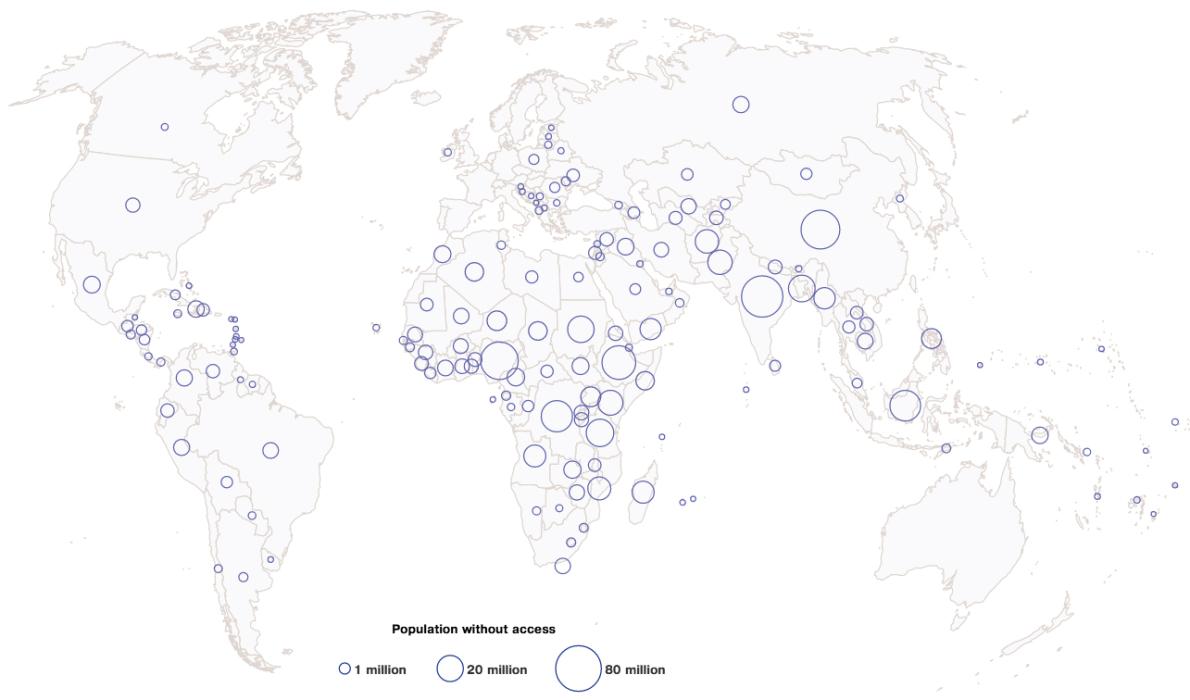A new graphic shows where access to safe drinking water has gotten better—or worse.
Around the world, 663 million people don’t have access to clean drinking water. That’s about nine percent of the world’s population.
The reasons for this range from lack of plumbing—as with tropical villages built into mountains to escape heat—to the sheer distance many people live from reliable water sources. Further, shifts in the weather—some thought to be related to climate change—have brought droughts in some areas and flooding in others: Natural disasters like this can wreck the water table.
The numbers aren’t as bad as they once were, though. In 2000, the United Nations set out to halve the number of people without access to water sources that are protected from contamination, called “improved water.” It met the target in 2010.
But as this graphic shows, there’s still more work to do.
Take Eastern Asia (China, Mongolia, North and South Korea). There’s been a steady drop in the number of people without access to water over the last 25 years, from about one in three to one in 25. But break out the data by country, and you can see that Eastern Asia’s progress is mostly China’s progress—the other countries in the region have remained stagnant. Ninety-six percent of the 723 million Eastern Asians who have gained access to improved water live in China.
The situation is similar in Southern Asia, where progress in India skews the numbers. In fact, India and China make up about half of the world’s progress in water access.
Within many countries, access varies between urban and rural areas. In 1990, almost three-quarters of the world’s population lived in rural areas. By 2015, that had reversed and the majority were in cities. So while there are fewer people in rural without access to potable water, improvements in urban areas have stagnated.
In some cases, urban progress is even reversing. In sub-Saharan Africa, access to piped-in water dropped ten points. Around the world, only nine countries (and only one in sub-Saharan Africa—Uganda) managed to hit the UN target across rural and urban populations.
The final divide comes between regions. Southern and Eastern Asia (led by China and India), Southeast Asia, Latin America, and Western Asia (the area we think of as the Middle East) all met the UN targets. Meanwhile, sub-Saharan Africa, which had low access to begin with as well as dramatic population growth, failed to meet the targets. Countries like Nigeria, Ethiopia, and the Democratic Republic of the Congo account for almost half of people without access to clean water—319 million people.
Looking on the bright side, 2.6 billion people have gained access to clean drinking water in the last 25 years. But unless the world can find better ways to get water to a rapidly urbanizing population in Africa and Asia, the next 25 years might not be nearly as positive.
Source: http://news.nationalgeographic.com/
Dear User/Visitor! Please, answer on our questions: tick off one of the positions – your answer will make us able to improve our site and make it more interesting and useful!


